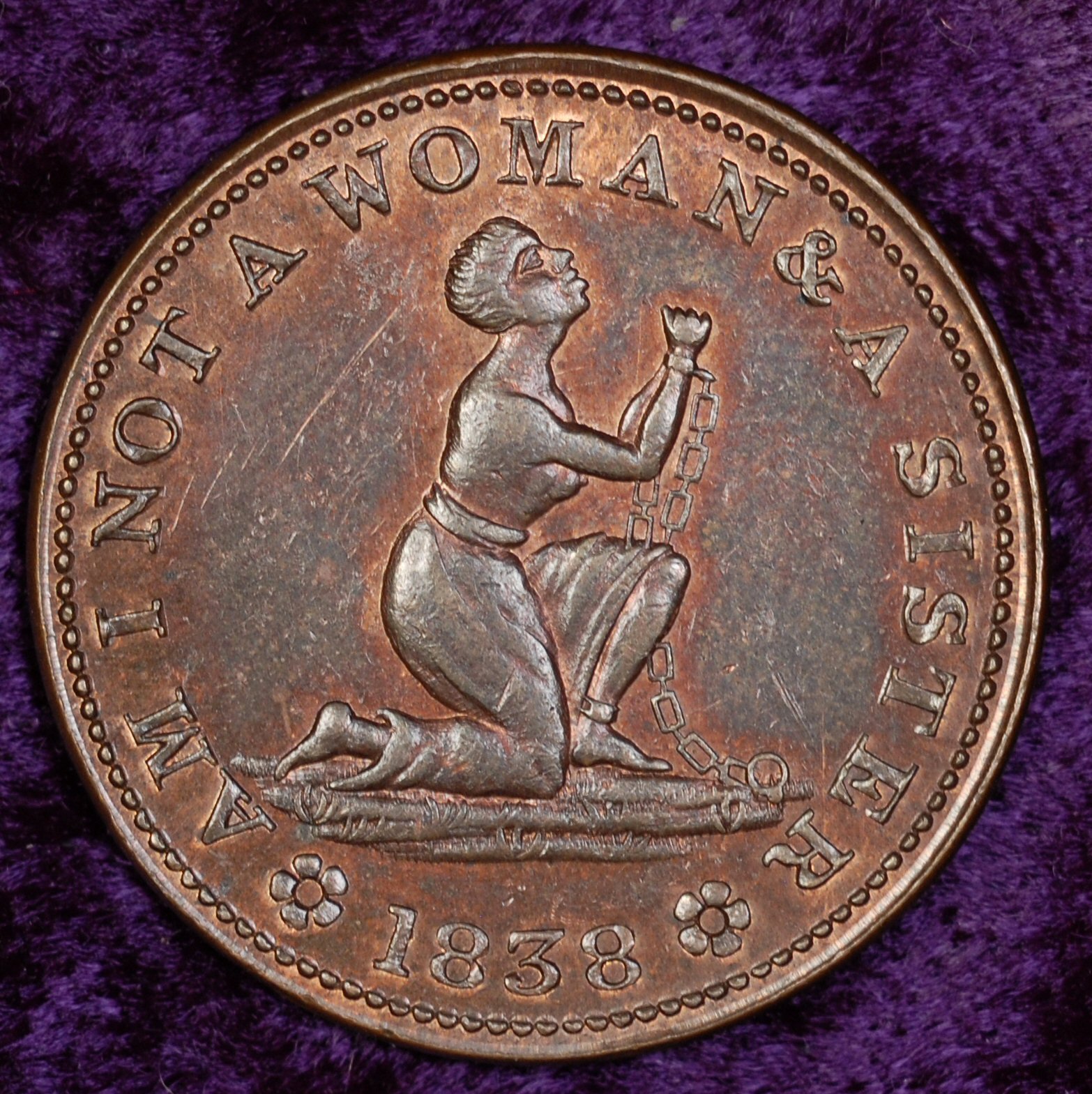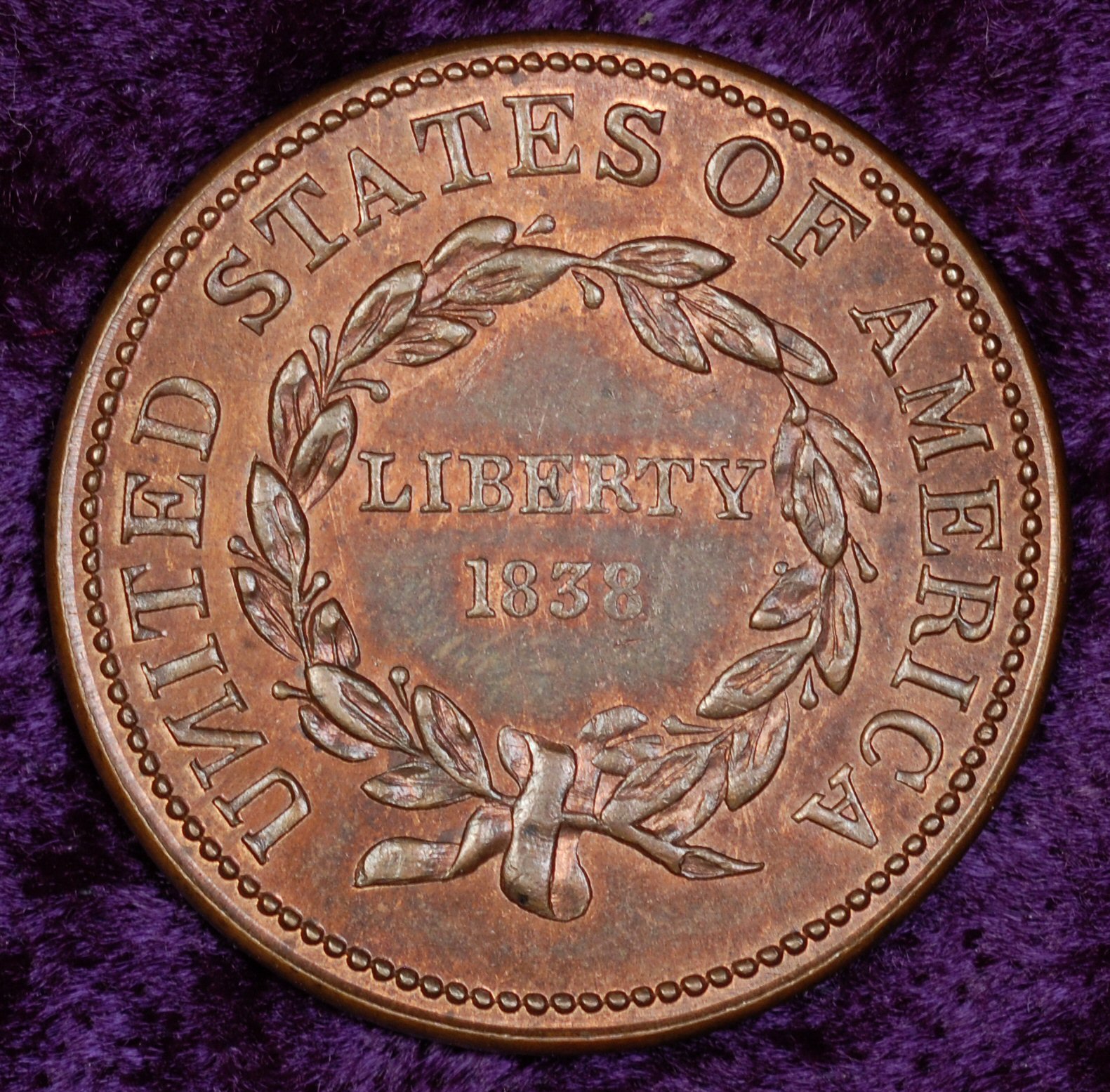A Survey of U.S. Anti-Slavery Tokens, Part 1
Written for my local club's newsletter:
It was the blot on the American Revolution. It was the contradiction that undermined Thomas Jefferson’s soaring human rights rhetoric in the Declaration of Independence. It was the divisive issue that forced the framers of the Constitution insert language to preserve it, much to our embarrassment today. That source of national shame and mortification was slavery. Language concerning slavery appears four times in the U.S. constitution:
• Article I, sec. 9, clause 1 stated that the importation of slaves would continue for 20 years after the constitution was ratified, which legally, but not completely, ended the practice in 1808.
• Article V stated that no law could be passed to ban the importation of slaves until that same year. (Article V’s main function was the set forth the procedures for amending the Constitution.)
• Article IV, sec. 2 provided for a fugitive slave law which required that the states were obligated to return runaway slaves to their masters.
• Finally, the infamous "three-fifths of a person clause," Article I, sec 2, provided that the slave population would be counted as three-fifths of its total in the determination of the number of members a state sent to the House of Representatives and the number of electoral votes a state had in presidential elections. This gave southern white men a disproportionate amount of representation, relative to their population, in the national government.
Opposition to slavery existed from the very beginning of our nation, but it would not be strong enough to play a major role in the electoral process until the 1830s. Some southern citizens understood the moral issues over slavery, but they could not bring themselves to oppose it. Thomas Jefferson, whose soaring rhetoric framed the optimism of the American Revolution, summed up his reticence over issue in this quote:
"But, as it is, we have the wolf by the ear, and we can neither hold him, nor safely let him go. Justice is in one scale, and self-preservation in the other."
For Jefferson, who was deeply in debt, the financial if not the moral aspects of this statement could be understood. Still, for most slavery advocates, the issue was summed up in one word, GREED, coupled with a total disregard for the rights of other human beings.


"Am I not a woman and a sister"
Jefferson's reluctance to take a stand on slavery was not shared by the members of the American Anti-Slavery Society who had their headquarters in New York City. In the fall of 1838 they came up with an unusual funding scheme to finance their operation. They engaged the firm of Gibb, Gardner & Co. to strike a large cent sized piece which presented an anti-slavery message. Following the Panic of 1837, a severe economic depression, various concerns placed tokens in circulation that replaced the official coinage. These Hard Times Tokens (HTTs), which were most often similar in size to the contemporary large cent, usually carried political messages or an advertisement for business.
This piece featured the figure of an African-American woman kneeling with her hands outstretched surrounded by the slogan, "Am I not a woman and a sister" (?) and the date "1838." The reverse, which strongly resembled the contemporary large cent, had a wreath surround by the legend, "United States of America," with the word "liberty" and the date "1838" in the center. The obverse of this piece was strongly influenced by a design that had appeared on a British anti-slavery token, issued in the mid 1780s. That piece featured a male slave with a similar slogan.
The American Anti-Slavery Society ran an advertisement for the tokens in their magazine, The Emancipator at a price of $1 per hundred pieces. There were also promises that a piece featuring a male slave would soon be available. The U.S. Mint Director, Robert M. Patterson, quickly moved to suppress the sale of the tokens. Following this action, the ad for the tokens no longer appeared in The Emancipator, but the pieces were sold by middlemen at a rate of 62 cents per hundred. These pieces were used in circulation like other Hard Times Tokens.
Today this piece is listed in several catalogs. Laymen Low listed it as token #54 in his Hard Times token book. DeWitt listed it as political token CE 1838-19 and Russell Rulau listed it as HTT 81 in his Hard Times token book. The token is fairly common, but strictly Mint State examples are scarce. It is most often seen EF condition.
The die for striking the token featuring the male slave was made, but today only four examples are known. It is listed in Rulau as HTT 82. The token sold at auction in 2016 for $70,500.00.
John Brown's Raid
On October 16, 1859 John Brown led a raid on the Harpers Ferry, Virginia Arsenal. Brown was a radical abolitionist who believed that violent acts were required to end slavery. His goal was to take over the arsenal and hold it until runaway slaves and other supporters came to the aid of the band his band of men. He also took hostages whom he would exchange for “any stout Negro.” He planned to arm his supporters with the rifles he captured from the armory and flee to the hills of Virginia. From there his guerilla force would establish a provisional government under a constitution that he had written and conduct raids against slaveholders. Brown thought that if he could conquer Virginia, the slaveholding South would collapse.
At first Brown and his men succeeded in capturing three buildings in Arsenal Square. Brown thought that the local slave population would flock to his cause, but the support he counted upon never materialized. Instead militiamen from the area surrounded his position and forced Brown and his forces to retreat to the firehouse. Brown and his men were trapped.
In the mean time Brown had allowed a Baltimore and Ohio express train safe passage though the town. Once the train reached the next station, the conductor wired Washington officials about the situation in Harpers Ferry. Fearing a wider insurrection, president James Buchanan ordered U.S. Marines, under the command of Colonel Robert E. Lee to end the siege. Lee and his forces, with the aid of his lieutenant, J.E.B. Stuart, arrived on scene just before midnight on October 17. Brown attempted to bargain with Lee, but the following day Lee ordered his men to batter down the door of the engine, and Brown was forced to surrender.
Ten of Brown's men were killed including two of his sons. Brown was severely injured, but he lived to stand trial for treason. Brown's conviction was a foregone conclusion, and he was hanged on December 2, 1859. At the time of his execution, Brown handed a note to a supporter which read that the country would be bathed in blood for its sins over the issue of slavery.
The reactions to Brown's actions and execution were mixed. In the South he was condemned as a dangerous traitor. In the North some intellectuals, such as Ralph Waldo Emerson, hailed Brown as a hero. Author Nathanial Hawthorn, best known for the classic novel, The Scarlet Letter, said that he deserved to be hanged. Abraham Lincoln summed up the opinion of many when he stated that slavery was wrong, but that it could only be ended by lawful means and not by violence.


The John Brown Medalet
John Brown's supporters and admirers issued a medalet that celebrated his life and martyrdom. This piece is listed in DeWitt/Sullivan as SL 1859-1. The obverse featured an almost full face portrait of Brown surrounded by his name, two circles, the slogans, "Slavery the sum of all villanies" and "marching along" and a total of 34 stars. The reverse features the figure of Brown hanging from a scaffold with a hood over his head with his name. The slogan, "Give me liberty or give me death,” runs around the scaffold. This motif is surrounded by the slogan, " Resistance to Tyranny is obedience to God ... 1859,"
This medalet was struck in silver, copper, brass, white medal and lead. It has been my experience that the white medal pieces are by far the most common although this piece is scarce in all medals. The brass examples are scarce, and I have never seen any examples in the other metals. Many of the white metal pieces have unattractive tarnish.


"Massachusetts for Justice"
Another emancipation medalet that was issued in 1859 was a product of powerful anti-slavery movement in Massachusetts. The Bay State, which was home of abolitionists Fredrick Douglas, William Lloyd Garrison and Wendell Phillips, was at the epicenter of the anti-slavery movement. Former president and congressman, John Quincy Adams, who died in 1848, was a noted statesman from the area. He fought the "gag rule" which prevented the presentation of anti-slavery petitions to the floor of the House of Representatives.
The design of this piece was mostly filled with slogans which reflected the strident nature of the Bay State anti-slavery movement. The obverse featured an arm wielding a sword which was taken from the Massachusetts State Seal. "Massachusetts" appeared above this design with the words, "For justice," below it. The reverse featured the slogans, "freedom of speech," and "We will never surrender." The only design element was a wreath similar to one found on the late date large cents.
This piece was issued in silver, copper and white metal. The white metal version is by far the most common, but overall this medalet is quite scarce.
Comments
I like that John Brown piece. One just sold on eBay in white metal not too long ago for about $12.00. I've testified a couple of times in the courthouse where he was tried and hope to add one of these to my collection at some point.
What a great write up Bill, thanks so much for this. I have the John Brown hangman in white metal.
I was watching today the Free Speech token but went for more money then I thought it should.
But I did manage to get a Grover Cleveland satirical in copper.
.
CoinsAreFun Toned Silver Eagle Proof Album
.
Gallery Mint Museum, Ron Landis& Joe Rust, The beginnings of the Golden Dollar
.
More CoinsAreFun Pictorials NGC FOR SALE
Very nice write up @BillJones. I always appreciate and enjoy your contributions to the boards.
I don't know if you care to get this technical, and maybe I'm telling you something you already know, but the Low 54 pictured above appears to me to actually be a Low 54A, or HT-81A, which is struck on a slightly smaller planchet (27mm vs. 28.3mm) and always exhibits some slightly different characteristics, including the opposing rim irregularity (seen at 1:30 and 6:30 on your token) and always a strongly struck second "8" in the date. The HT-81A is a Rarity 3 while the HT-81 is a Rarity 1.
ANA LM
USAF Retired — 34 years of active military service! 🇺🇸
I love these pieces and their part in our history.
I did some searches to find more information on Gibbs, Gardner & Co.
The following thread indicates John Gibbs engraved the dies and that the company was based in Belleville, NJ.
https://www.cointalk.com/threads/us-slave-hard-times-token-slave-conder-token.243989/
Here is some more info from @Broadstruck which indicates the company was selected because John Gibbs’ previous company, the Belleville Mint, struck some earlier pieces.
https://www.ngccoin.com/boards/topic/194774-hard-times-tokens-post-your-images/
Anyone know Gardner's first name?
I've seen a bunch of these more recent pieces and was wondering if anyone knew who struck these 2010 restrikes?
https://www.ebay.com/itm/UNITED-STATES-TOKEN-2010-RESTRIKE-OF-1838-ANTI-SLAVERY-TOKEN-27mm-IKM/401508292837
Yes, I am aware of that, but one slavery Hard Times Token with the same basic design is a enough for me. I upgraded to this piece, and the previous one I had was same subvariety. This is not a rare token, but it will cost you several hundred dollars, nevertheless.
I think that this token is rare when it has full red color. I have never seen one, but since I don't care for old red copper, it's not been on my list either.
Okay, I figured you probably knew that and I was the pupil trying to teach the professor haha.
FWIW, in my experience a HT-81A in the condition shown, properly attributed, will easily fetch north of $500. It is a lovely example.
ANA LM
USAF Retired — 34 years of active military service! 🇺🇸
Are there comparable pro-slavery tokens, especially from the Civil War period?
I believe it was Jess Patrick, the Patrick Mint
His equipment was a victim of the Santa Rosa fire last year, I fear
https://forums.collectors.com/discussion/988282/ot-disasterous-wildfires-in-sonoma-and-napa-valleys
Pacific Northwest Numismatic Association
Yes, that is Part 2 of this piece. Since that piece will appear in next month's newsletter, I hesitate to publish it here yet.
The Civil War era piece were CWTs, and they were cent sized. It is surprising, but there were not that many varieties. I know that some people who like to run down our coutry's history on race relations will be happy to hear this, but emancipation was not the #1 issue for those who fought and argued over the Civil War. Re-uniting the country was the first issue for Lincoln and many of his followers. When you think about it, that was way it had to be. You could not liberate the slaves in the South if you failed to defeat the Confederacy.
What a great thread, Bill! Thanks for posting
Dead Cat Waltz Exonumia
"Coin collecting for outcasts..."
Great thread Bill... I love the history threads associated with our coins/tokens... Breathes life into our little metal pieces.....Cheers, RickO
Fantastic research , writing and collecting Bill. Admirable , from my view.
``https://ebay.us/m/KxolR5
The time, research and energy it took you to post this is well appreciated by me, and I suppose I speak for a lot of others.
Great Job!
Pete
Resurrected Thread Alert
OK... I said I was going to stay focussed on my "Box"... but... SQUIRREL!!... and I was sidetracked over the weekend looking at Hard Times auctions. I bought this one after it was discounted, I'll send it in with at least one other that might benefit from Restoration service:
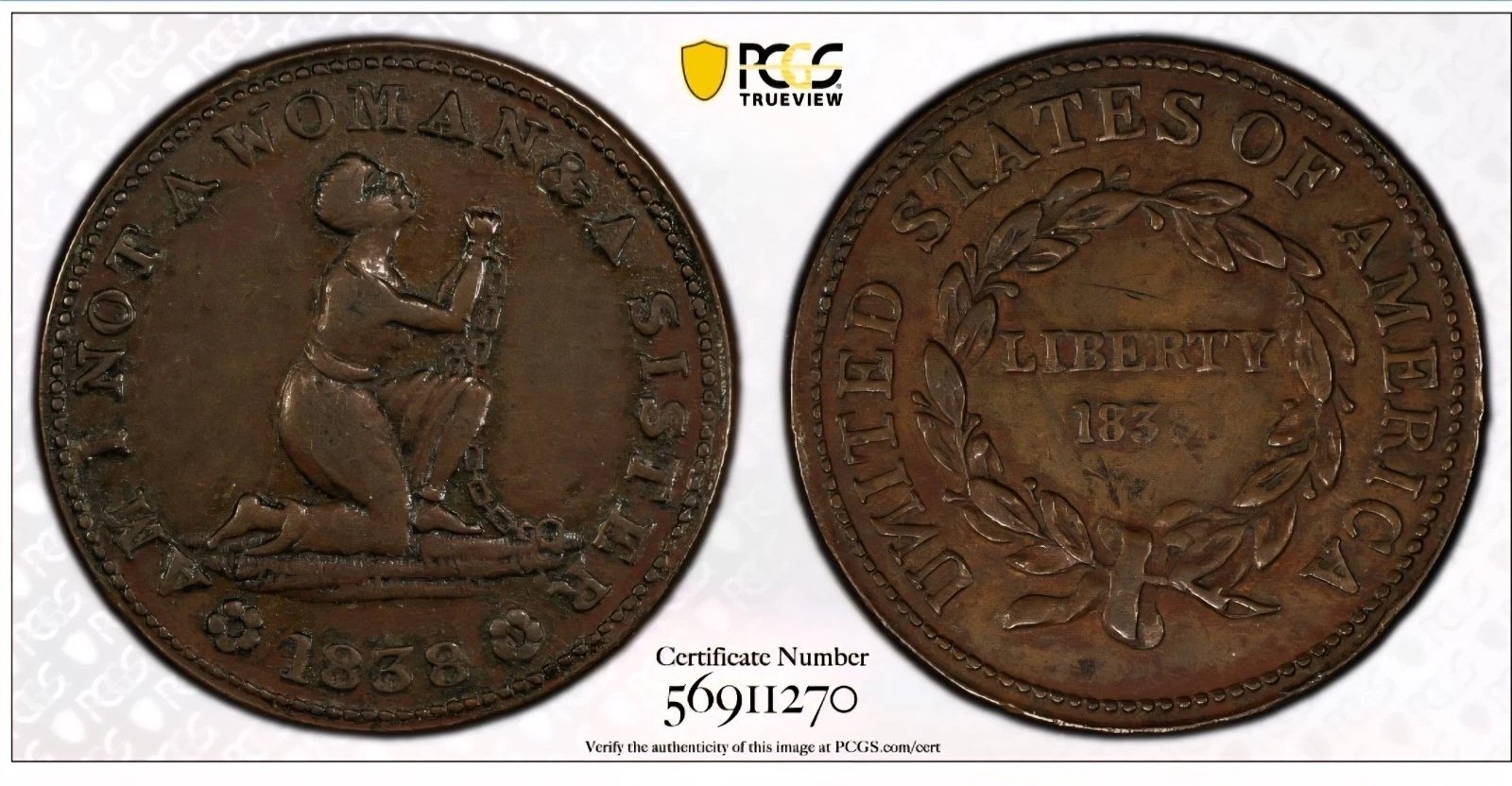
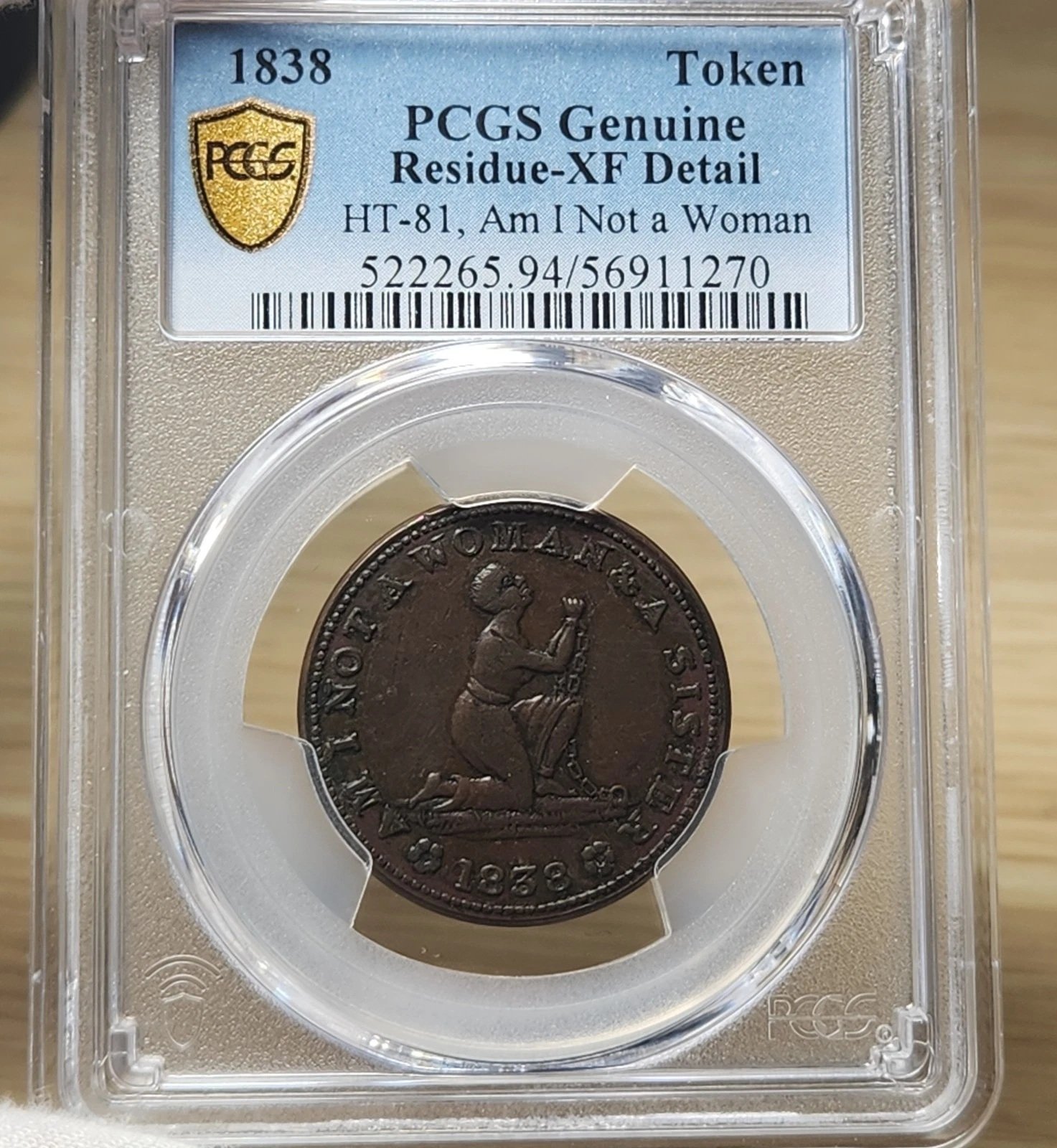
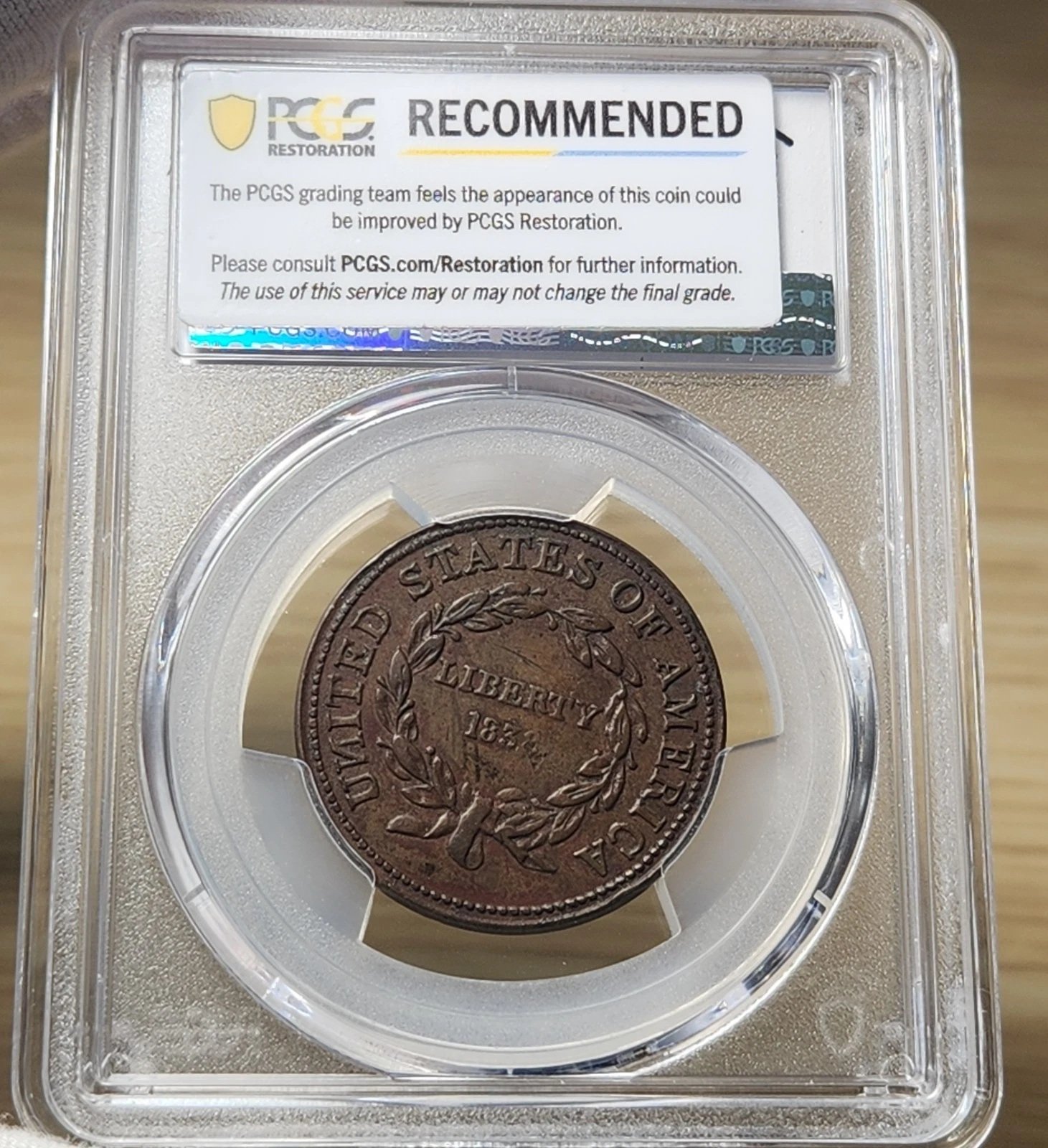
Successful BST transactions with: SilverEagles92; Ahrensdad; Smitty; GregHansen; Lablade; Mercury10c; copperflopper; whatsup; KISHU1; scrapman1077, crispy, canadanz, smallchange, robkool, Mission16, ranshdow, ibzman350, Fallguy, Collectorcoins, SurfinxHI, jwitten, Walkerguy21D, dsessom.
Missed this the first time around. Well done, Bill!
Cool. I had no idea such tokens existed. Always was a fan of the writings of Frederick Douglass. Wonder if there is a token of him.
Absolutely! Bill's article and the detailed history prompted me to look a bit further into this series and the rich political satire of the time. I also have a "Not One Cent" piece too...
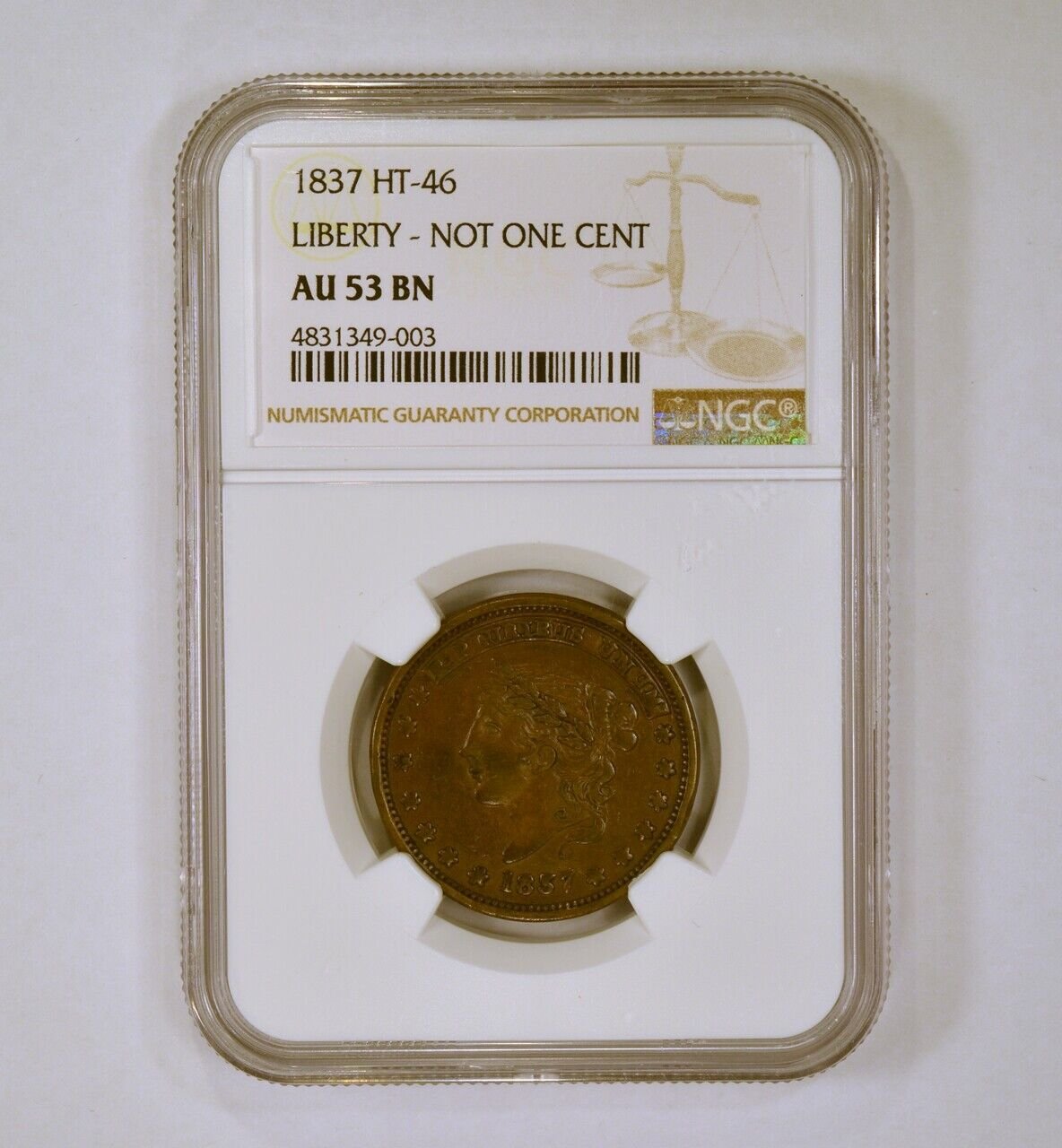
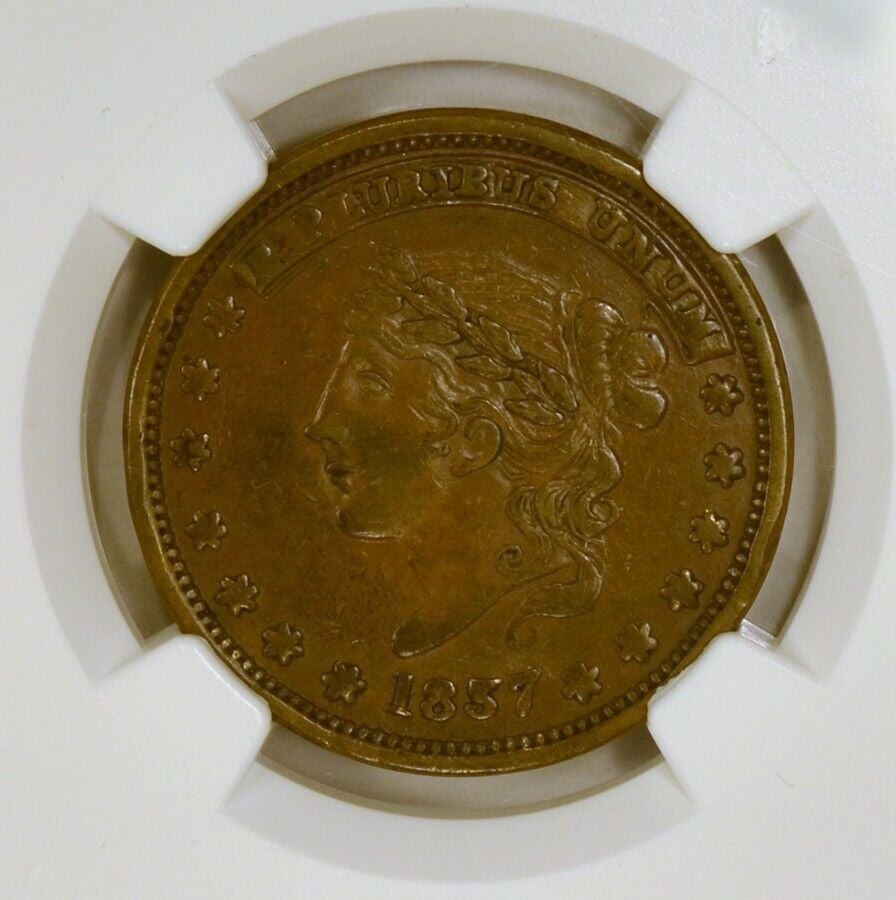
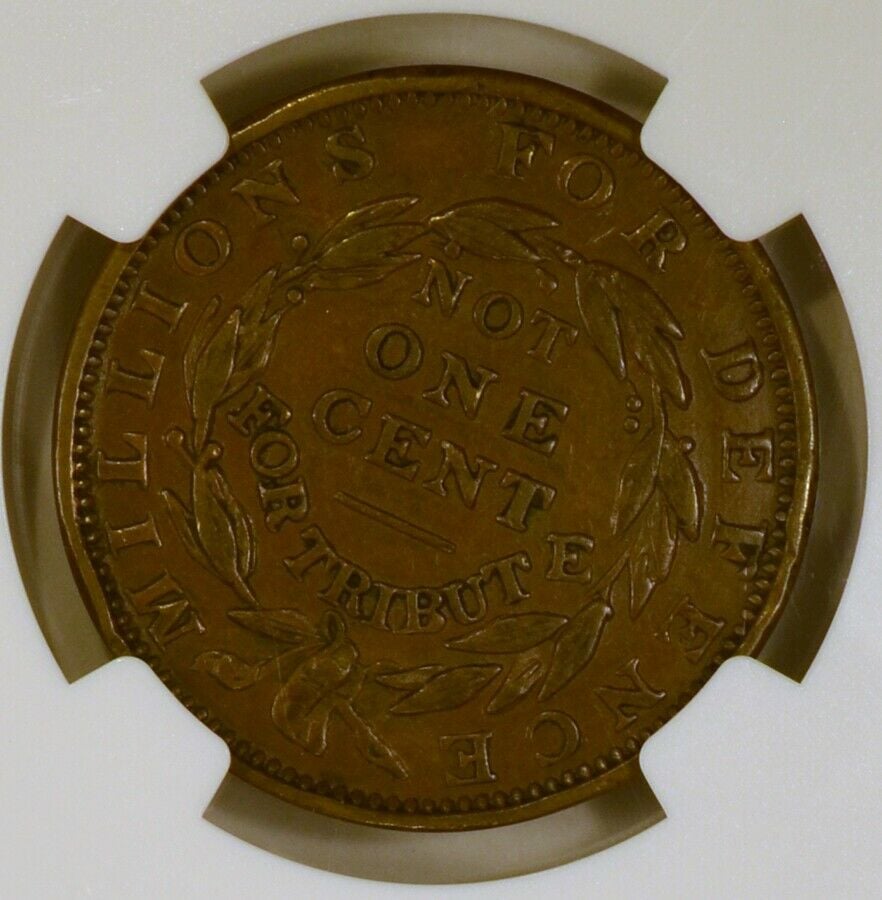
Successful BST transactions with: SilverEagles92; Ahrensdad; Smitty; GregHansen; Lablade; Mercury10c; copperflopper; whatsup; KISHU1; scrapman1077, crispy, canadanz, smallchange, robkool, Mission16, ranshdow, ibzman350, Fallguy, Collectorcoins, SurfinxHI, jwitten, Walkerguy21D, dsessom.
I recently discovered the Hard Times tokens and have really enjoyed learning about them, they so capture the vibe and feel of that peculiar pre-Civl War era, all its turmoil & strife. The 'Am I Not a Woman & Sister' is probably my favorite, very profound. Shopping for them I noticed the last 8 in 1838 on the center reverse is usually weakly struck, as it is on mine too.
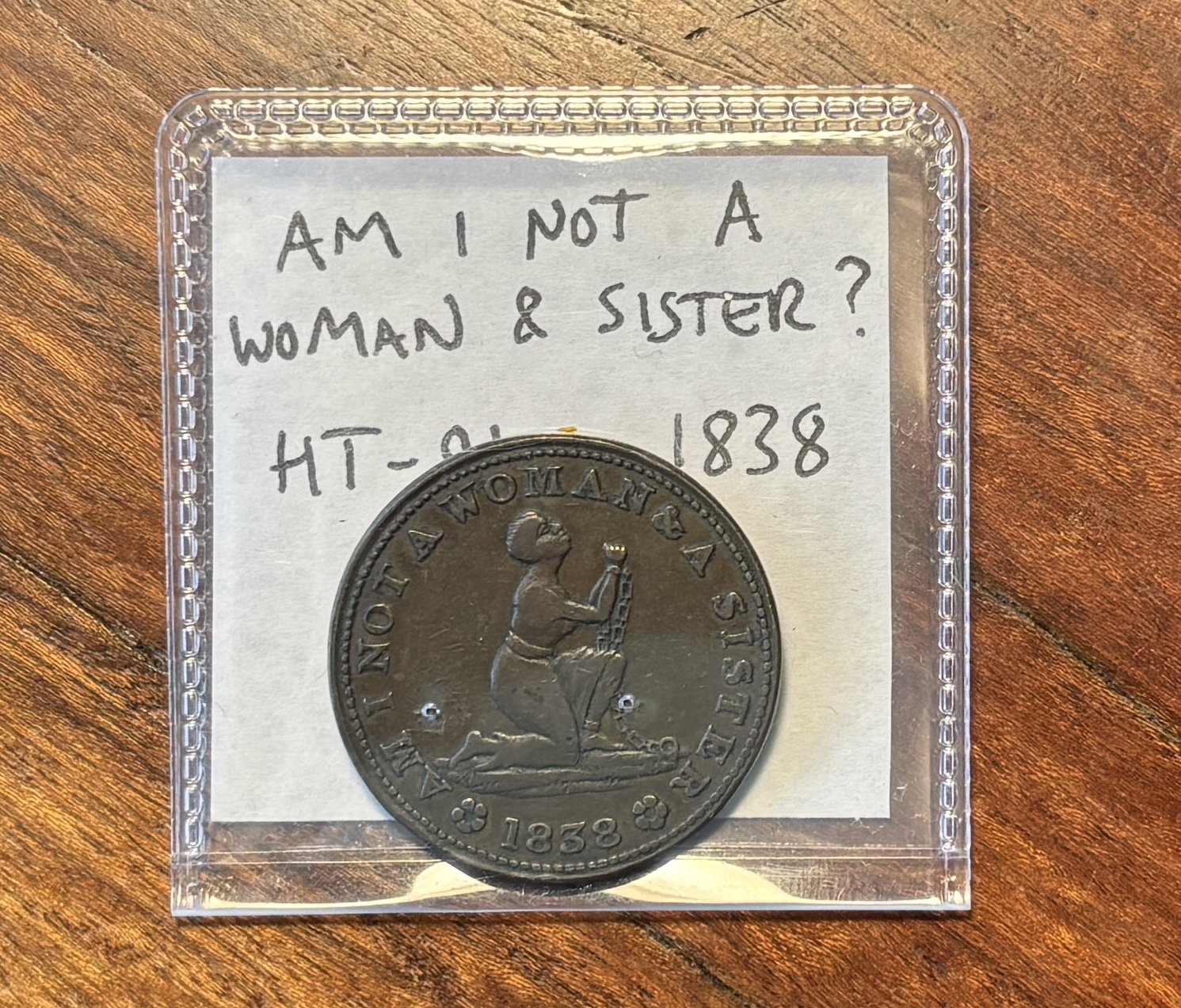
very well written and a thread worth bringing back! Here is my example, recommended for me by our late friend Broadstruck years ago:
